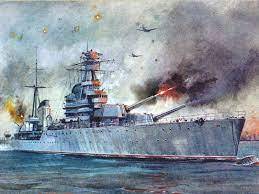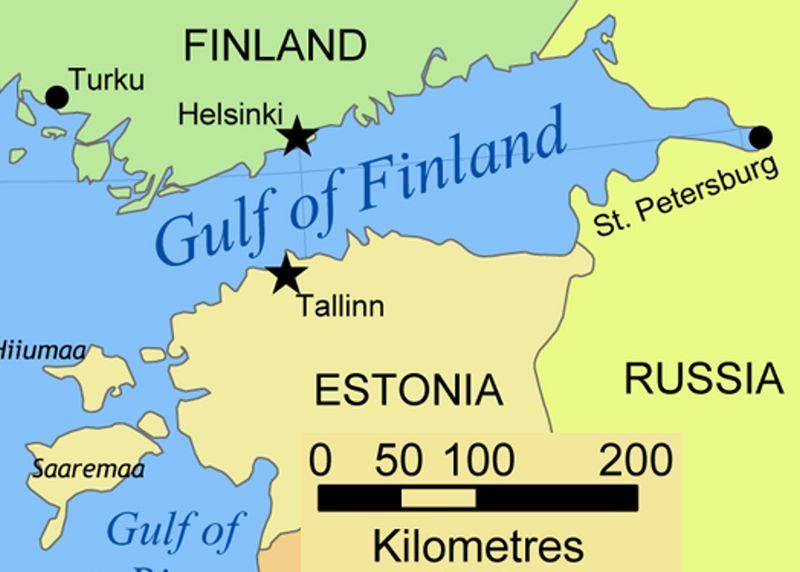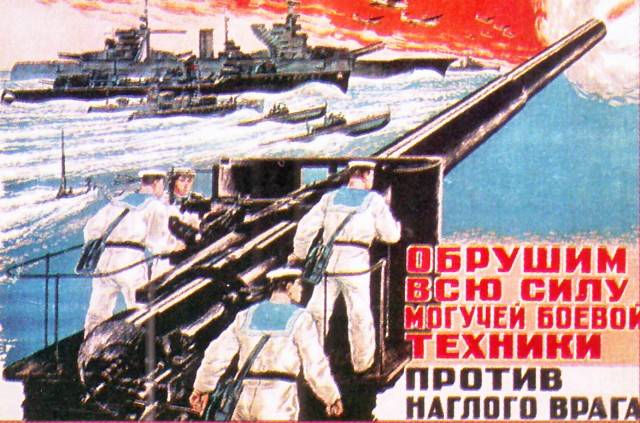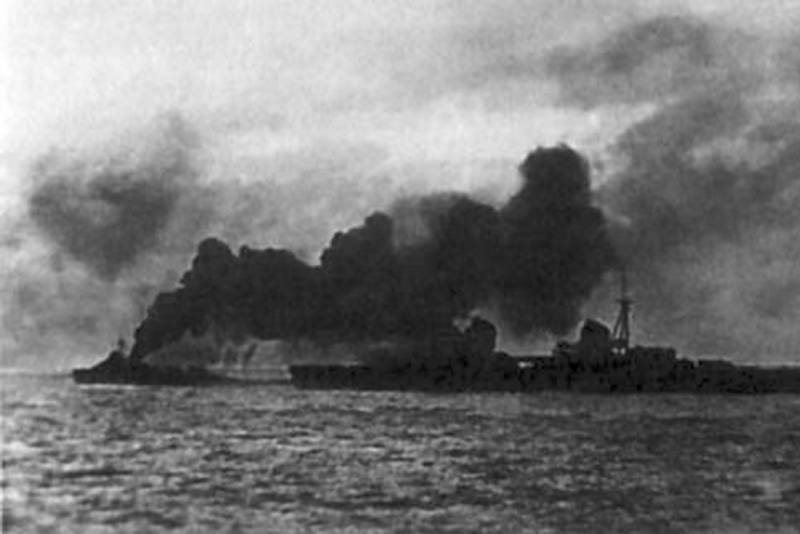Baltic non-Tsushima

And it sounds in all - a terrible tragedy, miscalculations, unprofessionalism, stupidity, the wrong choice of the route ... As for me, it was a tragedy when 83,6% of the servicemen involved in the operation died in the Smolensk battle, and that one with signs of optimism - during this time we prepared for the defense of Moscow. It was a war of extermination, and its scale for a modern man, accustomed to a different value of human life, does not fit in the head. The exchange of half a million soldiers for a month of time that summer was considered normal, and the Germans will begin to do the same in 1945.
And the war in the Baltic - it, of course, is rich in losses, like the whole of 1941, but it does not attract a catastrophe, especially if you look not at the army, but at the fleet, which found itself in a unique position. Unique, because the fleet until 1940 existed in one reality, where it was required to defend one, albeit a huge city in the depths of the shallow Gulf of Finland, and in 1940 it ended up in another, where Hanko, the Baltic islands and the Baltic coast. Well, the naval staff, which grew too quickly with our traditional lack of bases and repair facilities.
The problem was solved: the year allotted for this case was not wasted in vain, so, the main base fleet became Tallinn, which was a wise choice - from there the fleet had free access to both the Baltic and the Gulfs of Finland and Riga, Libava was re-developed with its Tosmare shipyard, the Moonsund Islands and Hanko were fortified. But the solutions were not only not optimal, they could not be. The same Libava, where many Soviet ships have accumulated in anticipation of repair. And not only ships - BC, fuel oil, other supplies ... And where were they kept? Where to repair? In its own way, the command of the Red Banner Baltic Fleet was right when it used the Baltic to its full extent - the alternative would be to pull hundreds of ships to the Gulf of Finland, where they would stand uselessly and purposelessly.
prehistory

Everyone guessed about the possibility of war back in May, and immediately on June 19, the fleet moved to combat readiness number two, a partial evacuation of ships and mobilization supplies from Libava began, ship and air patrols were strengthened. The tasks of the fleet were approved back in April:
- together with the air forces of the Red Army, defeat the German fleet in its attempts to enter the Gulf of Finland;
- to prevent the penetration of enemy ships into the Gulf of Riga;
- to assist ground forces operating on the coast of the Gulf of Finland and on the Hanko Peninsula, providing their flanks and destroying enemy coastal defenses;
- be ready to ensure the transfer of one rifle division from the coast of Estonia to the Hanko Peninsula;
- the actions of the fleet in combination with defensive mine laying, as well as the setting of underwater minelayers of minelayers on the approaches to ports and bases, and on inland waterways - aviation - complicate the deployment and operations of the forces of the enemy fleet.
And at 23:37 on June 21, readiness number one was introduced. Where did the fleet go wrong? He allowed it, or rather, even two. The first was that the sailors did not take into account the possibility of a catastrophe of the land front, when already on the first day Libava with the naval base turned into a mousetrap, a week later Ventspils was lost, Riga fell on June 30, and on August 5 the defense of the Main Fleet Base began. But in all honesty - how could such a thing be taken into account? Now we are smart, but then for such thoughts it was possible to follow the stage, and rightly so, counting on a disaster at the front within a week - this is alarmism.
And the second mistake - the headquarters of the fleet was waiting for landings, waiting for the attack of Leningrad, waiting for the new Moonsund-1917, but did not expect mine laying and air strikes, which is logical - if the Red Army were slowly retreating, snapping at every step, the Germans would simply be forced to operate with large surface ships, so then three mine-artillery positions came in handy, and the Germans just would not be useful to the massed laying of mines - this is a hindrance to their own forces. And the air threat - the Baltic Fleet had 302 fighters. The fact that the Red Army Air Force would be burned in the first week was also somehow not planned, there were enough forces to cover the bases and ships. They didn’t believe only in Libau, but the detachment of light forces was removed from there, the minelayer "Marty" was taken away, the mob-reserve was taken out ... But the defective ships and submarines, if the defense had lasted a couple of weeks, and had the Germans had no overwhelming air supremacy, would have also been taken out.
In the end it turned out how it happened:
The Germans did not show up for the war for which we were preparing, and there was nothing to understand the situation and effectively fend off the mine threat - our lag in communications and sweeping equipment was superimposed on the rapid development of the catastrophe and inadequate decisions of Moscow, however, also caused by quite understandable reasons - communication. The Center received information from the localities incomplete and late, often without even knowing where the whole armies were.
Defense

Was Tallinn necessary to defend? A rhetorical question - of course, it is necessary. Firstly, this is the main base of the fleet, secondly, it is part of the defense of Leningrad, and those Germans who were near Tallinn were not in the main direction, and thirdly, this is the connection with Moonsund, thereby, which interfered to the fullest extent use the Gulf of Riga to the enemy, and from which Berlin was bombed, fifthly - this is a potential threat to German communications. Was there enough strength and reserves for this? Not. The ground defense of the city began to be prepared only on July 17, and for obvious reasons they did not have time, for three weeks in total. Garrison - a combined hodgepodge of the remnants of the 10th rifle corps (10 thousand people without heavy weapons), an Estonian workers' regiment, detachments of sailors, in total about 20 thousand people and a whole company tanks... Ships became the mainstay of defense in such conditions - both as an air defense system and as the backbone of artillery.
It cannot be said that the situation was not understood: 15 tons of cargo were removed from the city, 000 wounded were evacuated, minefields and the enemy's coastal battery on Cape Yumindanin interfered with more. And they also interfered with the Luftwaffe, in the complete absence of long-range fighters from the Red Banner Baltic Fleet. So the defense without a break in the main direction was doomed, but neither the front nor the fleet had the right not to defend themselves. All this was clear and was reported upstairs on August 18:
The main message is that there will be no landings, there will be mines, many mines, a lot of mines, we have a shortage of minesweepers, it's time to withdraw a detachment of light forces (a cruiser, two leaders, nine destroyers) to Leningrad. There is no hope for the army either, Tallinn cannot be held back. And the longer we delay, the more we lose. The fleet did everything it could - 13 shells against the enemy is evidence of this, but the sailors could not replace the army. And the scale of losses during the evacuation of Tallinn was roughly clear:
But, in fact, there was no choice. I repeat - the war for which the Red Banner Baltic Fleet was preparing did not take place, and Tributs and his comrades did not know how to deal with constant mining with the loss of the coast and without air cover. He had two old battleships, two cruisers, a bunch of other ships, but there were not enough minesweepers, which is not bad, there were also no normal trawls, and experienced crews, and the ability to rely on the army. The fleet was like a boxer who received a sudden knockout with a concussion: it is unclear where the opponent is floating in front of his eyes, one thing is clear - this is not a sports duel, and all the learned rules and techniques can be forgotten.
Breakthrough
In general, there were different approaches regarding the evacuation of troops in World War II, and they depended on what was more important - ships or people. If the British could afford to put part of the fleet near Crete, they lay down, but England had few ground forces, similarly to Dunkirk - one fleet could not hold the German landings and sacrificed the fleet. But the Americans abandoned their own in the Philippines, and the British Dieppe training is also not an example. Odessa was taken away from us, but Sevastopol was abandoned, Tallinn was taken out, but first of all protecting the warships. It sounds, of course, extremely cynical, but - we had enough infantry, and an extra corps did not make the weather, but there were no ships needed for the defense of Leningrad. And there was no opportunity to build quickly, “the king has a lot” - this is not about us. From there are priorities and decisions. Moreover, these same "cruiser, two leaders, nine destroyers" could not help the slow-moving merchants. Could beautifully and stupidly sink to the bottom next to them. Would that really help? There were no safe fairways and no safe routes.
More precisely, we now know, but in those days Tributs did not have a myelophon, and he made decisions based on intelligence and common sense. And common sense said that the southern route had not been used for a long time, according to the logic the Germans intensively mined it, plus coastal batteries. You cannot go in a narrow fairway, in a snail's way, under fire from the shore - this is suicide. The central fairway - the Germans can get from the shore at the limit and without aiming, there are mines, but convoys between Tallinn and Leningrad went regularly - which means, in principle, you can pass. The northern route - along the coast of Finland under fire from stationary coastal batteries and through minefields, plus attacks by aircraft and torpedo boats. Suicide again. So ... Tributs chose everything correctly.
Yes, and the transition itself - apart from the obvehivaniye of the fairway, everything was done correctly. And the milestones would not have helped much in those conditions: too many ships, too many threats and panic, too inexperienced civilian crews.
And the rest is past the checkout, the result is as follows:
The combat core of the fleet was saved and helped to defend Leningrad, almost half of the convoy passed, and in those conditions this was clearly not a defeat, it could have been much worse. Losses? Yes, the losses are great, but for that summer and in that war, a third of the personnel was not a defeat, it was almost a success. It's not even close to Tsushima: if Rozhestvensky had spent such a percentage of warships and transports, it would have been a victory. The rest is reflection and distortion stories for the sake of politics, when heroes are passed off as cowards, and the dead as victims of butcher commanders. Meanwhile, then everyone did their duty, and no one could have done better without knowing the future. Which, however, does not exclude mistakes, but show me the ideal ones.

Information